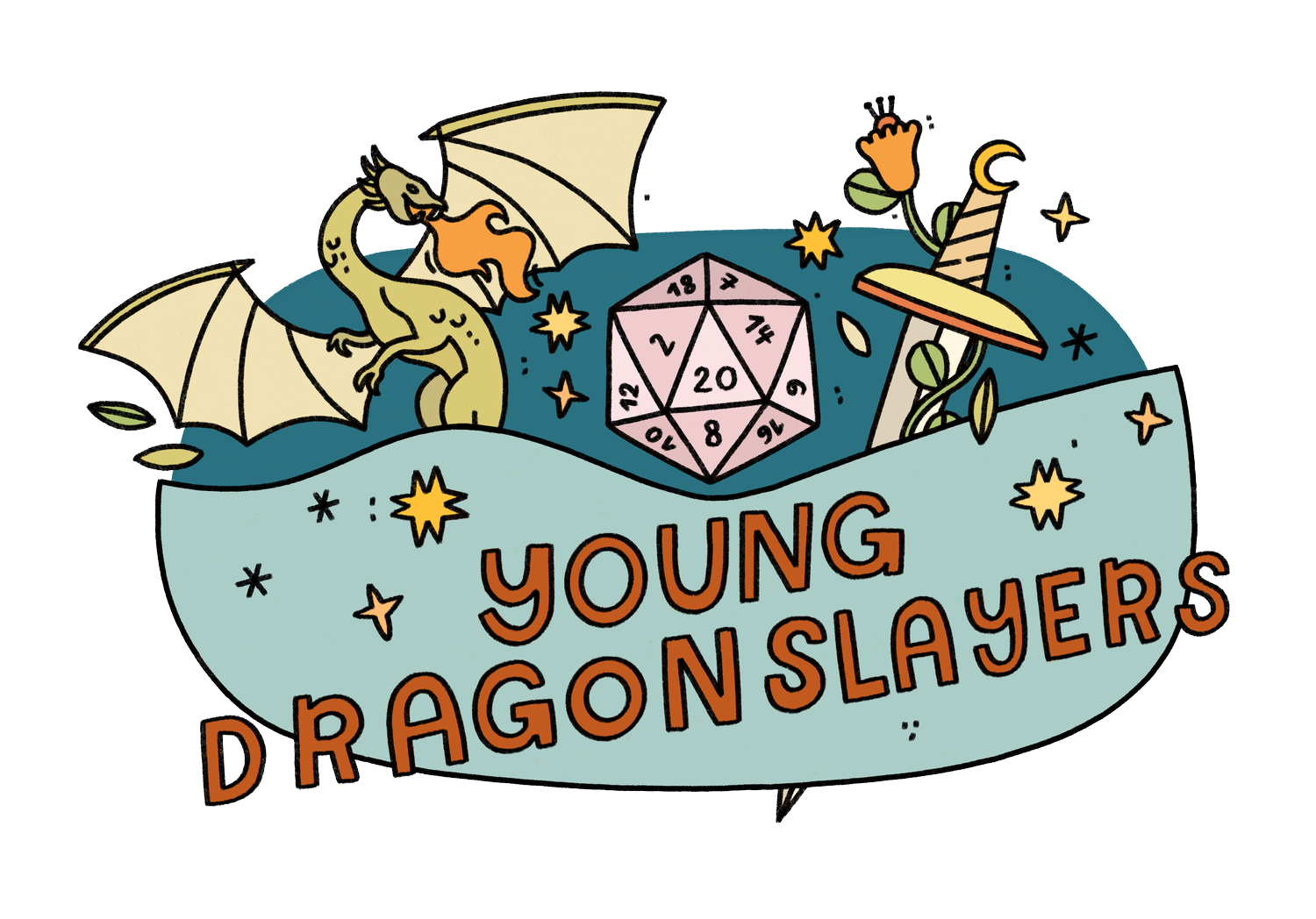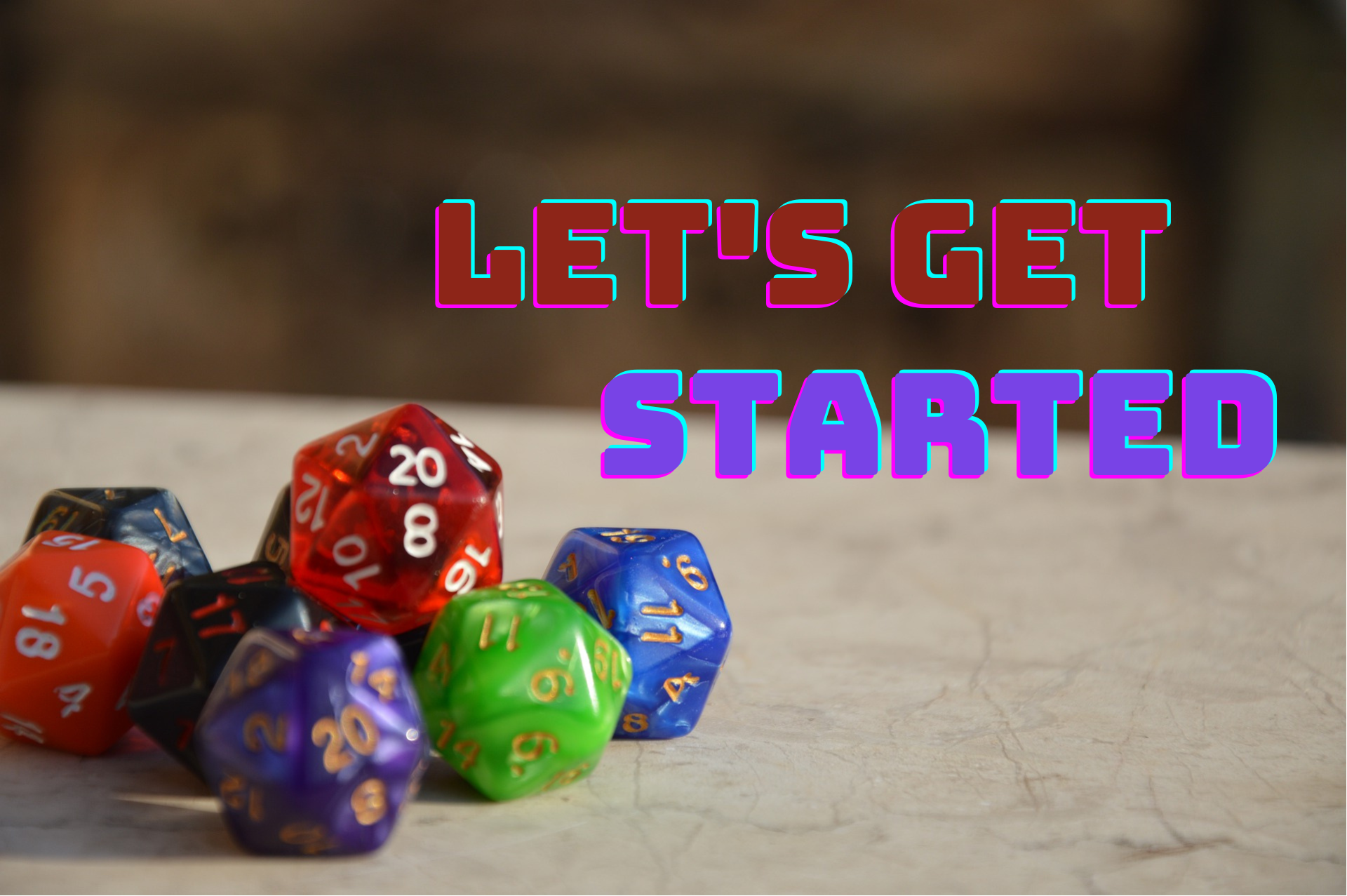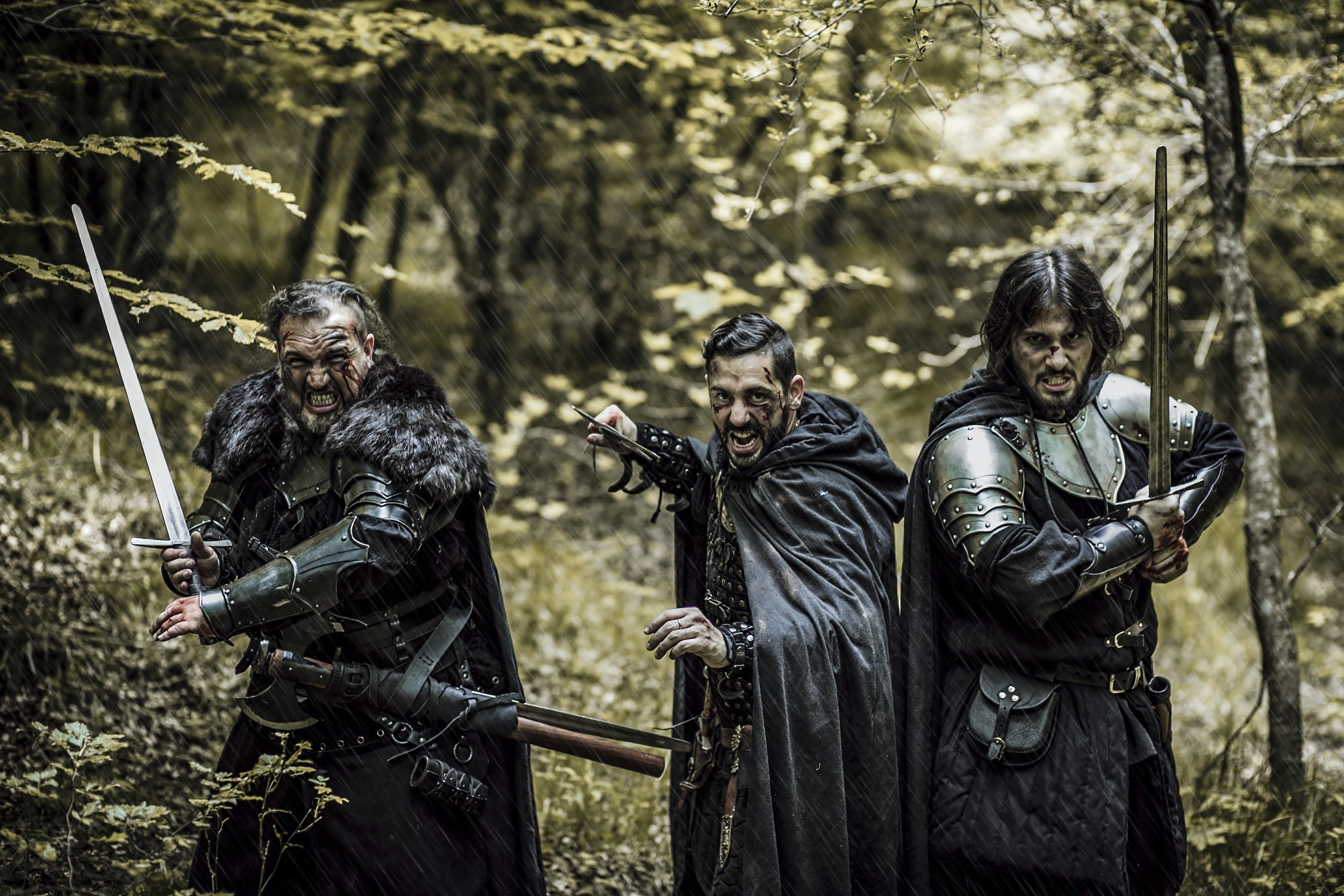How to Start Playing Dungeons and Dragons: A Beginner’s Guide
Dungeons & Dragons, also known as D&D, is a fantasy role-playing board game that has increased in popularity in recent years. The game was created way back in the 70’s, and it is currently in its 5th edition.
D&D is just like other board games you might know, but with more imagination. You can be whatever you want and do almost anything you could think of in a fantasy world. You might have an adventure on a secluded island after shipwrecking a flying ship, traverse fiery mountains to slay a dragon, or save an entire country by bringing together its people to rise against a tyrannical ruler.
Dungeons & Dragons is a very creative game that builds friendships and provides hours of imaginative fun to millions across the world. In this blog post, we’ll tell you everything you need to know as a beginner to get started playing the game. If you want to join in the fun, you’re definitely in the right place.
Get Started By Learning the Lingo and Basic Rules
First and foremost: get some of the lingo down. This article will include definitions of some terms from Dungeons & Dragons for your convenience. If you want to learn even more, take a look at our previous blog post with many useful words and phrases that you’ll be hearing a lot when getting started. There are also plenty of rules and regulations to D&D, but you will encounter them naturally as you create your character and play the game, so don’t worry about those yet.
You don’t need to know every single D&D rule in order to get started playing. In fact, you’ll probably never learn every single rule. And that’s ok! You’ll always have books (or Google) on hand to refer to if you need them. Plus, the most important part of D&D is telling a fun story, not following the rules perfectly. When you and your fellow players are in doubt, just make it up.
In its simplest form, D&D is sort of like a choose your own adventure story. To quote one of our earlier posts:
“Dungeons and Dragons, also known as D&D or DND, is a collaborative storytelling game. You take on the role of an imaginary character and go on an adventure with your fellow players, using a set of rules as your guide. You can do things like explore, fight, and talk to other people in the world. There’s no winning or losing: your only goal is to have fun.”
There’s also a lot of dice rolling in D&D. Dice rolling introduces an element of random chance to the game, which keeps it interesting. It adds drama, suspense, triumph, and sometimes failure to your game. This makes it more like a story, with realistic ups and downs that your character must get through to eventually reach whatever goals they have.
The most important rules to know about D&D before you start are:
Your game will be led by a Dungeon Master, or DM, whose job it is to set the scene for your story. They’ll describe what happens and play all people you’ll meet along your journey.
You will create a character with specific skills and abilities, and you get to decide how they would react to the situations your DM describes.
Whenever you do something important, you’ll usually have to roll a dice first to see how well (or poorly) you’re able to do the thing.
That’s really all you need to know to begin. Of course, there are lots of details to learn along the way, like what kind of die to roll when. So let’s take a look at those dice now…
Get Familiar With Your Dice
You’re probably familiar with a six-sided dice used in other games like Monopoly or Clue. But what if I told you that in D&D… we use seven different kinds of dice. It’s not as complicated as it sounds, I promise. Let’s have a quick lesson on dice-rolling.
Just like a regular die, each one has a set of numbers on them. Here are their names and ways to remember them:
d4 looks like a pyramid, with numbers 1 - 4.
d6 is a cube with 1 - 6.
d8 is diamond-shaped with 1 - 8.
d10 resembles a spinning top with 1 - 10.
d100 is like a d10 but each number has an extra zero at the end, making it go from 10 - 100.
d12 looks like a soccer ball with 1 - 12.
d20 is the biggest one with 1 - 20.
Big brain tip: the “d” stands for “dice”. And each number (4, 8, 12, etc.) refers to the number of sides on the die. You probably picked up on that already.
What are all these dice for?
Generally, the smaller dice are used when rolling to see how much damage an attack does – we can get to that later. The d20, on the other hand, is the main die that you will use most often. If you heard about D&D through TV shows, movies, YouTube, or your friends, you may have seen one of these. Whenever you try to do something in D&D, you usually have to roll a d20 dice to see how well it goes. The higher the number, the better you do. If you roll a d20 and get a twenty or a one, that’s called a “natural 20” or “natural one”.
Rolling a natural 20 means that you do something incredibly well or that you succeed. Maybe you’re a charming bard trying to persuade someone to lower the price of an expensive ring. If you were to roll a natural 20, that might mean that you find just the right words to convince them, and they realize how silly it was to ever price an item so highly.
Rolling a natural 1 means you fail at something or do very poorly. Maybe you’re a nimble monk trying to parkour off a rooftop into a window, but you roll a natural 1. That might mean that you misjudge the distance, and slam into the wall just below the window, plummeting down towards the ground.
When asked by the Dungeon Master (the person who narrates your game) to roll some dice, you will hear something like “roll 2d8” which just means roll two d8’s or roll a d8 twice. Try it yourself: what do you think “roll 12d8” means? It means roll 12 d8’s or roll a d8 twelve times!
That’s pretty much all you need to know about dice. Let’s see what else is on your to do list.
Start Making Your First Character
The first thing you can do if you feel truly inspired to play is make a character. This is one of the most exciting parts about getting into D&D, but it may also take the most time and thinking. Explaining all there is to know about character creation would take forever, so here’s a quick overview:
Come up with something that makes you excited. Think of your favorite TV show or movie characters, or a cool superpower you’ve always wanted to have. Do you want to be a graceful druid that can speak to animals, an evil goblin that shoots ice from its hands, a noble paladin that fights glorious battles to honor his people, or something completely different? There are endless possibilities to choose from. Try to develop an idea of who your character is, where they come from, what they can do, and what their goals and motivations are. You can use characters from video games, movies, shows, or books as inspiration.
Write down your ideas or use an online creation system such as D&D Beyond to make your character. Most D&D characters are best organized into a “character sheet” containing all the important info you’ll need throughout your game. It’s easiest to do online, but some players like to have a hard copy. There are helpful YouTube videos and other online resources that can walk you through every step of making an official character that is D&D-ready. It takes some time to convert your wonderful character idea into something functional, but once you’ve done that, you’ll have an extremely well thought-out and executed character.
Be prepared to be flexible. Once you start your game with your fellow players, you may find you want to tweak your character a little bit to make it work better for your particular story. You might show up to discover every single player has decided to be a wizard. Or, you might have your heart set on playing a pirate, but the world you’ll be exploring is mainly desert. Find a way to make your character both fun and functional to play.
You know the rules, you’ve created your character, and you know your way around all those dice. Are you getting excited to play yet?
Gear Up For Your First Adventure
Just like your fantasy character, you might need a few pieces of equipment on your journey. Let’s get the easy one out of the way first: you’ll definitely need access to dice. There are places to purchase dice (check out D&D Dice Roundup for all your dice needs) as well as free apps or websites that allow you to simulate dice rolling very easily.
Next, it would be helpful to have paper or a journal to write things down during your game sessions. There are lots of names, places, and items you may come across, so it helps to have a place to put them. You can also use places like your character sheet’s inventory to keep track of that sort of stuff.
To make the game more fun, consider using white boards, game boards, or even just big pieces of paper as a map for when you play. Some people like to get miniature character tokens to move around so that they can visualize what’s happening during the game. You can also just use dice or other small items like if you want.
Lastly, other gear to think about includes dice trays to roll your dice on, D&D handbooks that tell you rules and all sorts of useful things. The Player’s Handbook is your one-stop resource for players just getting into D&D. It will help you greatly with character creation, rules, and world-building.
Gather Your Allies
The next step is to find a group of players who are just as passionate about starting a D&D journey as you are. An ideal group size would be 3 to 6 people. You’ll need one person to be the Dungeon Master, who will control the story, narrate what happens, and potentially create the world you’ll be playing in. Dungeon Masters tend to be more experienced players, so you can always ask them questions and use their guidance within a game. If not, there’s always Google!
Your other group members don’t need to be experienced, but they should know what they’re getting into and think it sounds like fun. D&D takes a lot of time to play—games can last weeks, months, or sometimes even years! And it requires you feel comfortable roleplaying in front of your friends. Not everybody is going to be excited about playing a half elf paladin or using a character voice.
If you’re struggling to find people to play with, you’ve most especially come to the right place. Not only does Young Dragonslayers™ offer helpful tips on how to navigate the world of D&D, but we also organize groups to play together. We pair tweens and teens with like-minded fellow players based on their personality, interests, and experience level. You can learn more about us here, or get on our waitlist for upcoming games.
You’re Almost Ready to Start Playing D&D. Only One Step Remains…
By now you’ve made a character, have access to dice, know the lingo, and have touched up on a few rules that will be important. You’ve gotten your group together. You’re more ready than ever to play. Alas, we arrive at what may be the hardest part about getting into Dungeons & Dragons – the dark, evil, undead final boss behind it all who wants nothing but to end your campaign before it even begins… scheduling.
The hardest part about getting into D&D is finding a time that works for everybody in your group, meeting consistently, and getting everyone to actually show up. A good solution is to carve out a good chunk of time (probably at least a few hours) that definitely does not include other things like school, sports, after school jobs, or other hobbies and commitments.
Make sure that time works for everyone, and aim for that time slot consistently. The bigger the time slot, the better, and this is for two reasons. First, it’ll give you wiggle room on when exactly to start and finish, in case someone has to be late or leave early. Second, it means that if everyone shows up, you can play for a good while! D&D is best experienced when you are able to just play and become immersed in the story without worrying about having to leave so soon.
You’ve Done It! Time to Begin Your Campaign.
So there you have it. A guide for beginners who are interested in getting started playing Dungeons and Dragons. If you follow these steps, you’ll be in a great spot, basically ready to jump right into an adventure. There are lots of other things like creating a character, trying to become a Dungeon Master, creating monsters , and plenty more that are covered in our other articles for when you arrive at those steps. When the time comes, you’ll know exactly where to look.
And hey! If you’re looking to join an online group of D&D adventurers, we can help you get started. Our weekly groups for kids and teens are all about learning to play the game while also making new friends. You can learn more about us and apply to join our games by filling out a waitlist application.
Best of luck on your new campaign. Happy gaming!





